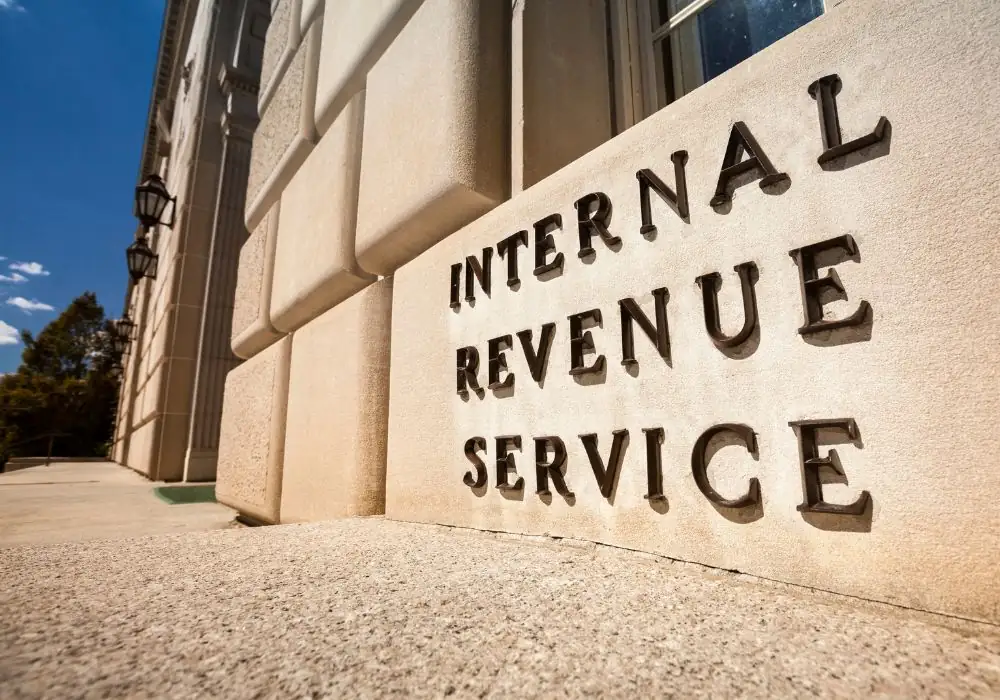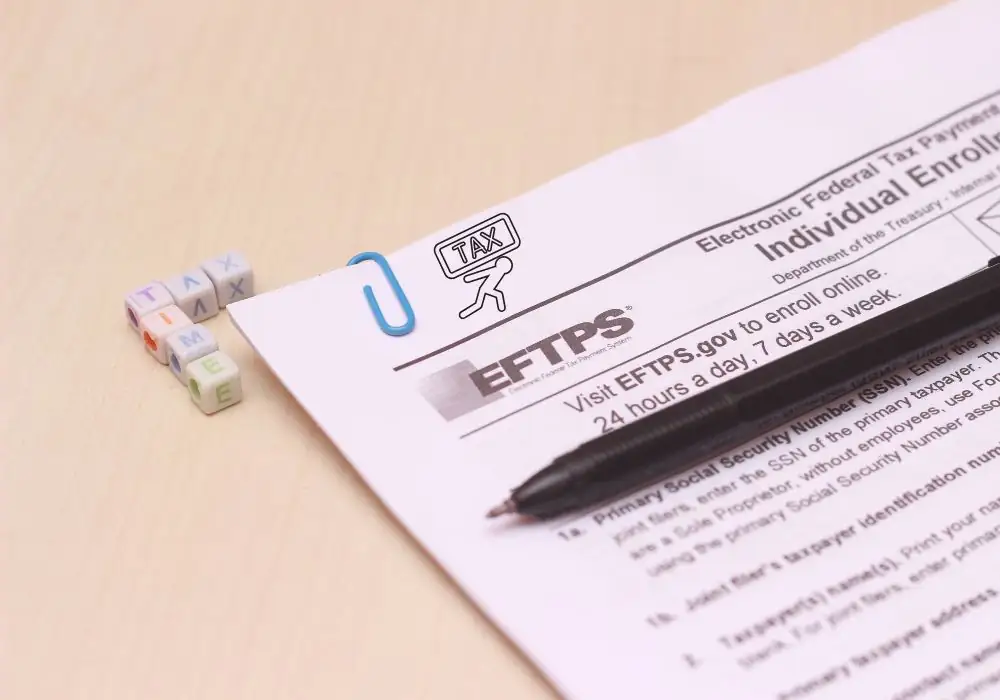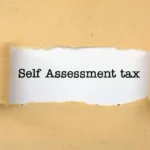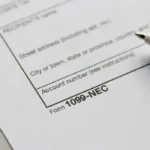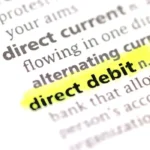- What Are IRS Payment Plans?
- Why You Should Set Up A Payment Plan?
- Types of Payment Plans Available to You
- Short-Term Payment Plans
- Long-Term Payment Plans
- Eligibility Criteria
- How To Apply For A Plan Online? Step-by-Step
- Preparing Your Application Materials
- Submitting and Awaiting Approval
- Fees
- Pros And Cons
- How To Deal With Rejections
- Alternatives
- Tips
- Building a Sustainable Budget Around Payments
- Monitoring Progress and Making Adjustments
- Avoiding Common Pitfalls During Repayment
- Real-Life Insights
- Frequently Asked Questions (FAQS)
- How do I set up an IRS payment plan?
- What are the setup fees for a payment plan?
- 3. Does interest keep adding up on my payment plan?
- 4. What happens if I miss a payment on my plan?
- 5. Can I pay off my plan early or make extra payments?
- Wrapping Up
When you receive an IRS letter, you might feel like someone just punched you in the stomach. Your heart starts pounding, and your brain spins with worries—how will you pay this huge tax bill? What if you can’t?
Undeniably, those thoughts can really make you sick, especially when life is already hitting you with things like doctor bills or suddenly losing your job.
But don’t panic, IRS payment plans let you split that big, scary amount into smaller pieces you can actually handle.
Checking out these options during hard times can really change a huge pile of worry into something way easier to deal with.
In this article, I’ll walk you through the IRS payment plans in a way that’s easy to understand, with tips from real experiences to help you take charge of your tax debt with confidence. So, let’s get started.
What Are IRS Payment Plans?
IRS payment plans, often referred to as installment agreements, allow individuals and businesses to settle tax debts over time rather than in a lump sum.
These arrangements spread out the owed amount into manageable monthly payments, giving breathing room while ensuring compliance with tax laws.
Because the IRS recognizes that not everyone can pay immediately due to varying financial realities, these plans prevent escalation to more severe collection actions, such as liens or levies.
You can think of these plans as a bridge between current obligations and future stability, where consistent payments gradually reduce the balance.
Eligibility typically hinges on factors such as the total amount owed and filing history, making it accessible to many.
As you explore this option, remember that penalties and interest continue to accrue until full payment, though the structured timeline helps mitigate overall costs compared to ignoring the debt.
From observing how these plans unfold in practice, the process starts with assessing your total liability, which includes taxes, penalties, and interest combined.
Once you’re approved, the agreement locks in terms that suit your cash flow, whether through manual payments or automatic withdrawals. This setup not only organizes repayment but also halts aggressive collection efforts during the active period.
Why You Should Set Up A Payment Plan?
Opting for an IRS payment plan often stems from the need to avoid harsher consequences while preserving daily financial flow.
Imagine managing rent, utilities, and groceries alongside a looming tax bill—without a plan, that balance tips easily.
By entering an agreement, you gain time to reorganize priorities, perhaps by adjusting budgets or increasing income streams gradually.
Moreover, these plans demonstrate good faith to the IRS, potentially improving your standing for future interactions.
Because defaulting on payments carries risks like plan termination, committing to one encourages disciplined habits that extend beyond taxes.
In scenarios where cash reserves run low, such as after unexpected repairs or family needs, the plan acts as a safeguard, allowing focus on recovery rather than panic.
Drawing from situations where others have shared their journeys, the relief comes not just from deferred payments but from the psychological lift of having a clear roadmap.
You must weigh the ongoing interest against the peace of structured repayment, ensuring the choice aligns with your broader goals.
Types of Payment Plans Available to You
Short-Term Payment Plans
If you owe less than $100,000 (that’s taxes, penalties, and interest combined), a short-term plan lets you pay it off in 180 days or less.
It’s perfect if you’re expecting some cash soon, like from a side gig or selling an old guitar, but need the IRS to chill while you wait.
Setting it up online is a breeze—no fees if you do it digitally! You can pay by check, bank transfer, or automatic withdrawals, which are like setting your bills on autopilot.
From real-life tries, this plan works great for smaller debts, especially if your income goes up and down, like during summer breaks.
Since it’s a short timeline, keep a close eye on your bank account to stay on top. Note that interest still piles up, but it’s less painful over a few months.
Approvals can happen fast—sometimes instantly—letting you move forward without sweating it.
Long-Term Payment Plans
For bigger debts that need more wiggle room, long-term plans stretch up to 72 months—that’s six years! These are for individuals owing $50,000 or less.
You suggest a monthly payment based on what’s left after must-have expenses like food or rent. For businesses owing over $10,000, automatic bank withdrawals, called direct debit installment agreements, are a must to keep things steady.
You’ve got to have all your tax returns filed first, which shows you’re playing by the rules. Not only do these plans give you more time, but low-income folks might get fee breaks, making it easier to start.
From watching others, the trick is to be realistic—don’t promise too much, or you’ll trip up if life throws curveballs like doctor visits. Planning a small buffer in your payments keeps the plan safe.
Eligibility Criteria
To get an IRS payment plan, you need to owe less than the specified thresholds and maintain up-to-date filings.
For individuals, short-term plans cover up to $100,000, while long-term plans have a $50,000 limit. While businesses face a $25,000 limit for long-term setups.
You can apply as a sole proprietor under individual rules, simplifying the process for self-employed filers.
If you’re low on cash, you might qualify for reduced or waived fees for an IRS payment plan, based on yearly updated federal poverty guidelines. Having your paperwork ready, like recent tax returns, makes the approval process smoother.
If you owe more than the plan’s limit, you can still apply using Form 9465 to negotiate, but you’ll need to show you’re financially strapped.
From sorting out tax stuff before, keeping your tax filings consistent shows the IRS you’re reliable. Check your situation against these rules to avoid any hiccups when applying.
How To Apply For A Plan Online? Step-by-Step
Preparing Your Application Materials
Before diving in, compile essential documents: recent tax transcripts, proof of income, and expense details for long-term proposals.
Accessing your IRS Online Account provides a centralized view of balances and history, facilitating accurate submissions. Because incomplete info delays processing, double-check everything against official guidelines.
You must consider your preferred method—online for speed, or mail for those without digital access.
As you outline proposed payments, use the IRS withholding estimator to refine amounts, preventing future shortfalls.
Submitting and Awaiting Approval
Launch the online tool at the IRS payments portal, selecting your plan type and entering financial details. The system guides you through eligibility checks, often approving simple cases on the spot. For complex scenarios, expect a review period of up to 30 days.
If applying via phone or Form 9465, note processing times extend slightly, yet offer personalized assistance.
During this wait, refrain from additional IRS contacts unless prompted, as the hold on collections activates upon request.
From shared experiences, the anticipation builds character—use it to solidify your commitment, perhaps by tracking expenses in a dedicated ledger.
Fees
Setup fees vary by plan and method, with short-term options carrying no charge when applied online. Long-term plans incur $22 for online direct debit or $69 for other online methods, escalating to $107 or $178 offline.
Low-income applicants benefit from waivers or reimbursements via Form 13844, submitted post-approval.
Penalties and interest accrue regardless, calculated daily on the unpaid balance, motivating timely adherence.
Because these add-ons compound, prioritizing higher payments where possible curbs growth. Revising existing plans adds modest fees, like $10 online, keeping adjustments affordable.
Understanding these layers ensures you budget holistically, factoring service charges alongside principal.
Pros And Cons
Entering a payment plan halts enforced collections, providing stability during repayment. You gain predictable outflows, aiding cash flow forecasts, while maintaining credit access since liens typically pause.
Not only does this foster compliance, but it also builds a record of responsibility.
Drawbacks include accruing interest, which extends the total cost, and default risks leading to termination and resumed actions.
Because rigidity in terms of demands discipline, unforeseen events like income drops necessitate prompt revisions.
Balancing these, the net often favors plans for those committed to follow-through, as the alternative—unmanaged debt—amplifies troubles exponentially.
How To Deal With Rejections
Getting rejections from the IRS on your payment plan can hurt, especially if you owe more than their limit or haven’t filed all your tax returns. But don’t sweat it—there’s still hope.
You can appeal within 30 days by sending a written letter explaining your side. While the IRS reviews it, they hit pause on chasing you for the money, giving you a breather to fix things, like turning in any missing tax forms.
You can also try applying again with stronger proof, like updated bank statements showing you’re in a tight spot.
From seeing others navigate this, sticking with it pays off. Also, you can talk to a tax pro, who can help clear up what to do next.
Alternatives
An IRS payment plan might not always be the perfect fit, but don’t worry—there are other ways to handle tax debt.
An Offer in Compromise (OIC) lets you pay less than the full amount you owe if you’re struggling with finances, like when you just can’t cover the whole bill.
Another option is Currently Not Collectible (CNC) status, which pauses IRS collection actions if your everyday expenses—like rent or food—are eating up all your cash.
However, for both, you’ll need strong proof, like bank statements or doctors’ bills, so gathering your documents ahead of time is key.
From seeing others tackle tax troubles, mixing these options with a payment plan can build a strategy that works for your situation. It’s like picking the right tools to fix a broken bike—choose what fits your needs.eli
Tips
Building a Sustainable Budget Around Payments
Integrate plan amounts into your monthly ledger, allocating from non-essential categories first. Tracking via apps or spreadsheets reveals patterns, allowing adjustments before defaults loom.
Because consistency underpins success, automate where possible to eliminate forgetfulness.
Review quarterly, tweaking as income evolves, ensuring the plan adapts rather than constrains.
Monitoring Progress and Making Adjustments
Regularly check your IRS account for balance updates, celebrating milestones like halfway points. If circumstances shift, request revisions promptly to avoid penalties.
Engaging family in discussions fosters accountability, turning solitary effort into shared resolve.
As payments dwindle, the debt momentum builds—channel that into bolstering savings for future buffers.
Avoiding Common Pitfalls During Repayment
Steer clear of missed deadlines by setting reminders, and communicate proactively with the IRS on changes.
Because borrowing against the plan invites complications, prioritize internal reallocations. Learning from others’ oversights, like underestimating interest, equips you for smoother sailing.
Real-Life Insights
Recall a colleague who, after a business slowdown in early 2023, confronted a $35,000 tax notice that disrupted sleep and focus.
Initially paralyzed, she turned to the online tool, securing a long-term plan with direct debit at the reduced low-income fee.
Monthly outflows of $600, drawn seamlessly, allowed her to stabilize operations without liquidation fears.
Challenges arose when freelance gigs dipped, prompting a revision that lowered payments temporarily while extending the term.
Through it, she discovered budgeting’s power, reallocating from dining out to accelerate payoff by six months.
That journey, marked by initial dread and eventual empowerment, underscores how plans serve as lifelines when embraced fully.
You might encounter similar ebbs, yet armed with preparation, they transform into growth opportunities.
Frequently Asked Questions (FAQS)
How do I set up an IRS payment plan?
Setting up an IRS payment plan is easier than you may think. You just need to head over to your IRS account or IRS.gov and log in. If you’re already an IRS user and owe $50,000 or less (that’s taxes, penalties, and interest together), you have a better chance of getting approval.
Once you’re in, choose a short-term plan (pay in 180 days or less) or a long-term one (up to 72 months of monthly payments), and pick how much you’ll pay each time.
You can also call 800-829-1040 or send in Form 9465 by mail. For basic cases, approval comes fast—sometimes right away.
What are the setup fees for a payment plan?
Fees depend on how you apply and the plan type. Short-term plans are free if done online. For long-term, it’s $31 for direct debit online, $130 for other online methods, or up to $225 by mail or phone.
Low-income folks (under 250% of poverty guidelines) can get fees waived or reimbursed. These cover processing, but remember, interest and penalties still add up separately.
3. Does interest keep adding up on my payment plan?
Yes, interest accrues daily on the unpaid balance at the federal short-term rate plus 3% (currently around 8% annually, compounded daily).
Penalties for late payment also continue until you’re paid in full. That’s why paying extra when you can helps cut the total cost. The IRS adjusts rates quarterly, so check the latest on their site.
4. What happens if I miss a payment on my plan?
Missing a payment can default your agreement, letting the IRS resume collections like wage garnishment or liens.
But you get a grace period—contact them right away to revise terms or make up the amount. Staying current on future taxes is key to avoiding this. Pro tip: Set up direct debit to automate and reduce risks.
5. Can I pay off my plan early or make extra payments?
Absolutely—extra payments go straight to your balance and reduce interest. There’s no prepayment penalty, and you can pay it off anytime via IRS Direct Pay or by mail. Just note your monthly minimum; anything over that shortens the plan. This is a smart move if you get a windfall, like a bonus.
Wrapping Up
Understanding IRS payment plans shows they’re more than just paperwork—they’re like a trusty friend helping you get back on solid ground.
Whether you’re racing to pay off a smaller debt in a few months or pacing yourself for a longer haul, it all depends on what’s going on in your life.
Since taking action now beats kicking the can down the road, jump into your IRS account and start the process. Relief is closer than you think.
By sticking to the plan and keeping an eye on things, you’re not just clearing debt—you’re building smarter money habits.
Check out the IRS agreement tool, apply without stress, and watch that weight lift bit by bit. Getting your finances back on track happens one smart move at a time.

